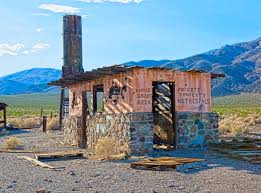
“The Garlock Fault marks the northern boundary of the area known as the Mojave Block, as well as the southern ends of the Sierra Nevada and the valleys of the westernmost Basin and Range province. Stretching for 250 kilometers (160 mi), it is the second-longest fault in California and one of the most prominent geological features in the southern part of the state.
“The Garlock Fault runs from a junction with the San Andreas Fault in the Antelope Valley, eastward to a junction with the Death Valley Fault Zone in the eastern Mojave Desert.
…
“The last significant ruptures on the Garlock were thought to be in the years 1050 AD and 1500 AD. Research has pinned the interval between significant ruptures on the Garlock as being anywhere between 200 and 3,000 years, depending on the segment of the fault.[3] The most recent notable event in the Garlock Fault Zone was a magnitude 5.7 near the town of Mojave on July 11, 1992.[4] It is thought to have been triggered by the Landers earthquake, just two weeks earlier.
“However, no surface slippage of the fault itself had been recorded in modern times until 2019. Following a series of earthquakes on nearby minor faults in late July 2019, the Garlock Fault was observed moving about 2 cm (0.8 in)[5] between July and October accompanied by numerous minor earthquakes, a state known as fault creep, and producing a bulge in land observed by satellite radar images.”
https://en.wikipedia.org/wiki/Garlock_Fault#Geology
Everything that can happen eventually will. The longer we watch, the more we notice.
If the big one happens will it cause the power to come back on?
bookmark
I’m in San Diego right now until Monday afternoon. If things could hold off until later that day, I’d be cool with it.

Professor Tom Jones of the USGS said “it’s not unusual”.
CC